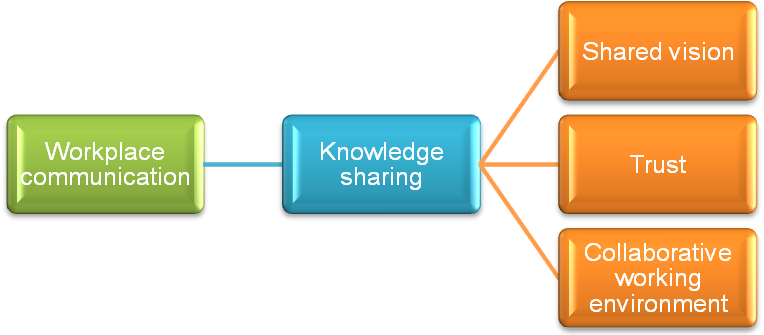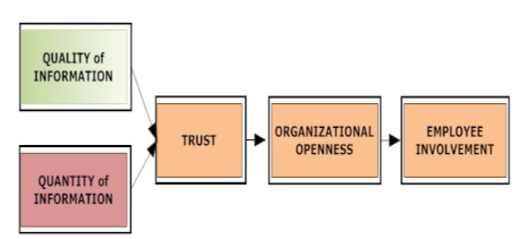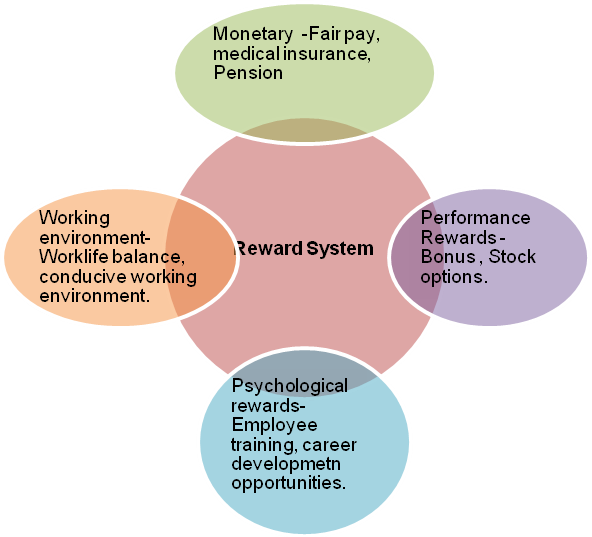Executive Summary
Human resource management plays a crucial role in an organisation’s quest to achieve competitiveness with regard to human capital. This report evaluates people management as one of the core elements in human resource management. The report focuses on British Petroleum [BP], which operates in the oil and gas industry.
In the course of its operation, BP is facing challenges arising from changes in the business environment. Some of the changes that the firm is currently experiencing relate to labour force trends, workplace communication, technological forces, and changes in the employment law.
In a bid to survive in such an environment, it is imperative for the BP’s management team to be proactive in adjusting its HRM strategies in line with the prevailing internal and external environmental changes. The report illustrates some of the aspects that the firm should consider in its people management practices in order to achieve the desired competitiveness in the labour market.
Introduction
British Petroleum is one of the leading public limited companies in the UK’s oil and gas industry. The firm was established in 1909 and it has penetrated the global market successfully. By the end of 2013, BP had established operations in 80 countries. BP ranks fifth amongst the largest companies in the world with regard to total sales revenue and sixth with regard to market capitalisation.
An evaluation of previous studies and reports show that firms in the oil and gas industry are facing diverse macro and micro-environmental forces. Some of the macro-environmental forces include legal and technological forces.
For example, oil and gas producing companies are experiencing tight environmental regulations due to the high rate of global warming, which is leading to climate change. Additionally, these companies are experiencing a threat arising from the high rate of technological changes.
These macro-environmental forces are beyond the organisational managers’ capacity to influence or control. On the other hand, micro environmental forces originate from an organisation’s internal operations, and thus they are within the organisational managers’ capacity to control. An example of an internal force includes employee resistance to change and conflicts.
Additionally, the emergence of information age has led to growth in the level of knowledge within the labour market, as evidenced by diverse institutional forces on aspects related to employment standards, employee safety, and health and labour relations amongst others.
The macro and micro-environmental forces have significant impact on internal stakeholders such as employees. Aguilera and Dencker (2004) assert that organisations are comprised of people, who are allocated diverse duties and responsibilities. Therefore, people are considered as one of the environment inputs in an organisation’s success.
Individuals in the different levels of management have diverse powers and responsibilities according to their job description. However, the success with which an organisation achieves its desired goals is subject to the extent to which individuals in the different levels of management interact with each other, hence leading to the creation of synergy (Aguilera & Dencker 2004).
In a bid to achieve the desired synergy, it is imperative for organisational managers to integrate effective power relationship and people management strategies and policies. This report evaluates the major changes taking place in BP’s internal and external environments with specific reference to labour force trends, employment relationship, technological changes, workplace communication, and developments in employment law.
Discussion and analysis
Labour force trends
Developing effective people management skills is a fundamental aspect in managers’ quest to execute their duties effectively. People management skills increases the productivity of an organisation’s workforce, hence the firm’s long-term performance.
One of the issues currently facing BP is the high rate at which employees are seeking employment opportunities that align with their career path of development. Moreover, BP is facing a challenge emanating from the change in the employees’ perception and demand with regard to job satisfaction.
Currently, employees are increasingly focusing on the overall job environment and not solely on monetary gains in making the decision to stay in the organisation. One of the issues that employees are focusing on entails the concept of work-life balance.
Employees are demanding a high level of flexibility in their job. McNall, Masuda, and Nicklin (2010, p.63) assert that many ‘organisations have begun to offer flexible work arrangements to help employees balance work and family demands’. This trend has arisen from the high rate of globalisation and information explosion because of development in information communication technology. These trends have greatly opened up the labour market.
Currently, the labour market is characterised by a high degree of mobility. Subsequently, employees are seeking for good employment opportunities even in organisations that are beyond their national boundaries. McNall, Masuda, and Nicklin (2010) argue that employees are increasingly basing their decision to stay in a particular organisation on the likelihood of progressing through their desired career path.
Competing firms are increasingly exploiting this market trend by adopting the concept of poaching in their human resource management practices. This scenario presents a challenge in BP’s quest to survive in an industry characterised by intense competition.
Previous studies have identified human capital as one of the greatest sources of competitive advantage in organisations. In its quest to achieve competitiveness with regard to human capital, BP’s management team has an obligation to adopt effective people management strategies and skills in their strategic human resource management practices.
Some of the practices that the firm can integrate include effective human resource planning, employee development, effective job analysis, implementing effective reward management strategies, and nurturing optimal employee relations.
McNall, Masuda and Nicklin (2010, p.1359) further emphasise these sentiments by asserting that managerial ‘practices need to be aligned with environmental demands so that desired work behaviours arise’. Failure to adjust the organisation’s human resource strategies with the prevailing employee needs will affect the BP’s competitiveness in the labour market.
Workplace communication
Effective communication is a fundamental element in an organisation’s efforts to develop a collaborative working environment. Baines (2009) emphasises that workplace communication should be considered as an investment rather than a cost item.
Ryan, Windsor, Ibragimova, and Prybutok (2010) assert that organisational performance is subject to the degree of collaboration amongst the various internal stakeholders such as employees.
Moreover, Turner, Qvarfordt, Biehl, Golovchinsky, and Back (2010, p.1) argue that workplace communication ‘enables collaborators to foster ideas, build a common round, and develop complex interpersonal relationships’. Subsequently, the level of information and knowledge sharing increases significantly. The diagram below illustrates the relationship between workplace communication and knowledge sharing.

Source: (McNall, Masuda & Nicklin 2010)
Incorporating effective workplace communication is not an option. Therefore, it is imperative for organisational leaders to foster effective information flow in order to improve their firms’ performance. One of the ways through which this goal can be achieved is by adopting open communication channels.
Abram, Cross, Lesser, and Levin (2003) contend that workplace communication is essential in nurturing a high level of employee involvement.
However, it is imperative for organisational managers to monitor the open communication channels in order to improve the level of trust, which is critical in organisational growth. The model below illustrates how an organisation can nurture a high degree of employee involvement through workplace communication.

Source: (Thomas, Zolin & Hartman 2009)
Workplace communication in BP is undergoing significant changes arising from a number of factors such as the emergence of diverse communication platforms and global issues. These changes have had significant impact on BP’s workplace communication strategy.
In order to create the desired level of synergy, organisations have an obligation to nurture a high level of trust amongst employees in different departments in order to sustain workplace communication. Moreover, the significance of effective knowledge management has improved the need to effective workplace communication.
In addition to the above changes, workplace communication is affected by the high rate of diversity in the workplace. Organisations are increasingly becoming culturally diverse due to changes in the labour market. For example, in its quest to nurture a strong workforce, BP sources for its human capital from the global labour market.
Furthermore, the firm has adopted the policy of non-discrimination of employee based on their demographic characteristics. Subsequently, the firm has experienced a significant increment in the level of diversity in its workforce, which has led to remarkable communication challenges in its internal communication climate.
Some of the communication challenges that the firm is experiencing relate to language barriers coupled with social and cultural differences. These challenges have significant effects on the firm’s efforts to nurture effective interpersonal connection amongst the top management and lower level employees.
Employment relationship
The relationship between employees and employers is fundamental in organisations’ operation. Lack of such relationship may affect the employees’ morale and productivity adversely. This assertion arises from the view that the success of the organisation is dependent on the contribution between employees and employers.
Cornelissen (2011) asserts that the employment relationship is characterised by the concept of psychological contract between the two parties. Upon joining a particular organisation, employees assume that they will be treated honestly and fairly.
Additionally, employees expect employers to observe justice and equity, and thus communicate effectively regarding possible changes and developments. Moreover, employees are of the perception that their loyalty will be reciprocated through various avenues such as assurance of job security and recognition.
Organisations in the oil and gas industry are increasingly focusing on improving their performance in order to survive in the turbulent business environment. Subsequently, the firms are increasingly adopting project-based approach in their quest to achieve the desired level of growth.
For example, the intensity of competition in the oil and gas industry is pressurising BP to increase its investment in offshore oil and gas exploration. However, the firm’s success in such projects will be influenced by the relationship developed between the firm and its employees. This assertion underscores the importance of integrating effective employee relations strategies.
Employee engagement
The firm’s success in a competitive business environment will be subject to the level of employee engagement developed. It is imperative for BP to develop a high level of employee involvement in the decision making process. This move will play a fundamental role in minimising the likelihood of the firm experiencing a high degree of resistance from employees in its quest to implement diverse organisational changes.
One of the ways through which the firm can achieve this goal is by eliminating bureaucracy with regard to internal communication. For example, the firm should ensure that employees and supervisors interact freely. Nurturing effective employee involvement will aid in developing positive perception regarding the firm’s policies and decisions (Leat 2011).
Employee motivation
The effectiveness and efficiency with which employees execute their duties is affected by their morale. Subsequently, it is imperative for organisational managers to nurture the level of motivation. One of the ways through which this goal can be achieved is by assigning employees challenging tasks to give them an opportunity to grow. Moreover, delegating tasks will develop a sense of relevance in the firms’ operations.
BP should consider adopting the concept of delegation in its HR management practices in order to provide employees with an opportunity to progress through their career, which can be achieved by assigning some of the managerial activities to low-level employees.
Subsequently, employees will feel trusted, which leads to an increment in the level of their commitment towards the organisation. Moreover, employee motivation can be achieved by incorporating an effective reward system that integrates both monetary and non-monetary gains and benefits as illustrated by the diagram below.

Source: (Leat 2011)
Conflict management
The existence of conflicts between an organisation’s employees and top-level managers cannot be eliminated. Such conflicts may affect employee relations adversely. Currently, employees in different economic sectors are demanding higher levels of remuneration in order to enable them meet their financial obligations.
On the other hand, organisations are facing financial constraints arising from the changes in the economic environment. Failure to balance the employees’ needs and organisational constraints may dent a firm’s image. Subsequently, HR managers have an obligation to manage such conflicts through a win-win strategy (Leat 2011).
Technological changes
Innovations in information communication technology have led to significant changes in organisation’s human resource management practices. For example, development in information technology has led to the emergence of diverse web-based communication platforms such as social networks [Facebook, Twitter, blogs, and wikis].
Turner et al. (2010) assert that different communication platforms and mediums support specific information context and expressiveness. Additionally, the various internal communication tool adopted is characterised by unique strengths and weaknesses.
In an effort to develop a strong workforce, it is imperative for a firm to adopt an effective employee recruitment and selection strategy. Currently, organisations are increasingly using social networks in recruiting employees by posting job description and job analysis on social media platforms.
This trend has arisen from the efficiency of communicating through social networks in reaching a large number of potential job candidates. Moreover, advertising job vacancies on social media is relatively cost effective compared to using conventional mediums such as newspapers.
Additionally, social networks have remarkably improved the effectiveness with which organisations undertake workplace communication. Thus, in its quest to transform itself into a competitive firm in the oil and gas industry, it is essential for BP’s management team to select a mix of the most effective communication tools.
Development in employment law
The employment environment is undergoing significant developments with regard to the legal aspect. Currently, organisations are facing an increment in the level of diversity within the labour market. In an effort to ensure equality in the workplace, different legislations are adopting strict regulations in an effort to eliminate discriminative practices amongst employers.
For example, governments are formulating legislations such as the Disabilities Act, the Race Relations Act, and the Faire Employment Act in an effort to protect job candidates with diverse physical challenges (Inagami 2008).
Employers are required to provide equal employment opportunities to all job candidates irrespective of their demographic characteristics such as race, nationality, gender, sexual orientation, and religious beliefs amongst other variables.
Therefore, firms are required to eliminate any form of discrimination in their recruitment practices. Failure to adhere to the set employment laws may lead to huge legal costs in addition to damaging an organisation’s image.
Conclusion and recommendations
Developing effective people management skills is fundamental in organisations’ quest to develop sufficient competitive advantage. This analysis shows that BP is facing diverse challenges emanating from the business environment. Some of the challenges that the organisation is currently facing relate to technological changes, new labour force trends, workplace communication, employment laws, and significance of employee relations.
Despite these changes, firms have an obligation to survive in the long term. This analysis shows that the effectiveness with which a firm survives in the long term is dependent on the success with which it formulates and implements effective people management strategies and practices.
The above analysis shows that integrating effective people management practices in the BP’s strategic human resource management practices will increase the likelihood of developing sufficient competitive advantage with regard to human capital. Subsequently, it is imperative for the firm’s management team to focus on the following aspects.
- The firm should nurture a high level of employee involvement and engagement in order to improve their job satisfaction.
- BP should invest in employee training programs in order to assist employees achieve their career development objectives.
- The firm should adopt an effective internal communication strategy [top-bottom and bottom-up] in order to improve the level of engagement amongst employees.
- The firm’s management team should constantly review the employment laws in order to eliminate the risk of non-adherence.
Reference List
Abram, L, Cross, R, Lesser, E & Levin, D 2003, ‘Nurturing interpersonal trust in knowledge sharing networks’, Academy of Management Executive, vol. 17 no.4, pp. 64-77.
Aguilera, R & Dencker, J 2004, ‘The role of human resource management in cross-border mergers and acquisitions’, International Journal of Human Resource Management, vol. 15 no. 8, pp. 1355-1370.
Baines, G 2009, Meaning Inc: the rise of the 21st century company, Pearson Education, New York.
Cornelissen, J 2011, Corporate communication; a guide to theory and practice, Sage, New York.
Inagami, T 2008, New developments in employment discrimination law, Japan Institute for Labour Policy and Training, Tokyo.
Leat, M 2011, Employee relations, Edinburg Business School, Edinburg.
McNall, L, Masuda, A & Nicklin, J 2010, ‘Flexible work arrangements, job satisfaction and turnover intentions; the mediating role of work-to-family enrichment’, The Journal of Psychology, vol. 144 no. 1, pp. 61-81.
Ryan, S, Windsor, J, Ibragimova, B & Prybutok, V 2010, ‘Organisational practices that foster knowledge sharing across distinct national cultures’, International Journal of Emerging Transdiscipline, vol. 13 no.2, pp. 131-158.
Thomas, F, Zolin, R & Hartman, J 2009, ‘The central role of communication in developing trust and its effect on employee involvement’, Journal of Business Communications, vol. 46 no. 3, pp. 287-310.
Turner, T, Qvarfordt, P, Biehl, J, Golovchinsky, G & Back, M 2010, Exploring the workplace communication ecology, FX Palo Alto Laboratory Incorporation, San Francisco.